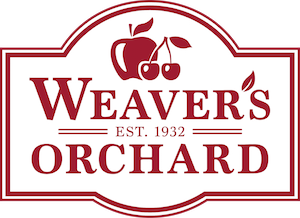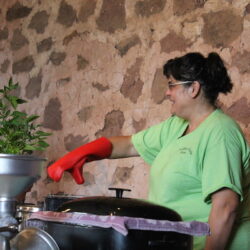Raspberry Jam
Ingredients
- 2 quarts of raspberries
- 1 tablespoon lemon juice
- 1 package of Powdered Pectin
- 1/3 cup of Water
- 6 cups of Sugar
- 1 Tablespoon of Grated Lemon Peel* (Optional)
Instructions
- Combine the berries, water, lemon juice and lemon peel in a large pot. Bring to a boil over high heat stirring constantly. Add the sugar and continue stirring. Let the mixture return to a rolling boil for about 2 minutes. Continue stirring the entire time. Remove it from the heat. Skim off any foam. (This stuff is so yummy, I usually put it in a bowl to the side.) Ladle your hot jam into hot jars leaving about ¼ inch headspace. Adjust the two pieces of the caps and process 10 minutes in a boiling water canner. This will make about 5 1/2 Pints
- While this is processing in the canner, get some vanilla ice cream out and put a little of the skimmed off raspberry jam foam on it. This is your treat for standing over the boiling berries stirring all that time! The skimmed off foam will last a while in the refrigerator so you can enjoy it on crackers, add it to a chocolate cake you are baking or put it in some yogurt. Enjoy!!
Grape Jelly (No Added Pectin)
Ingredients
- 4 lbs of Firm Ripe Concord Grapes 3 Cups of Sugar
- ½ Cup of Water
Instructions
Make the Juice:
- Wash the Grapes well and remove all the stems. Crush the grapes ( You can do this with a potato masher its much cleaner than how Lucy and Ethel crushed the grapes) . Add the water, cover the pot and bring the mixture to a boil of over high heat. Reduce the heat and simmer for 10 minutes. Strain the juice through a damp jelly bag or several layers of cheesecloth. Place the strainer and juice in a cool place and let it stand for about 12 hours. If the juice has developed any crystals, these are tartrate. This is more commonly known as Cream of Tarter. It is a chemical reaction that is totally organic. Should you see these crystals just restrain the juice through the jelly bag or cheesecloth.
To Make the Jelly:
- Put the juice in a large pot, add the sugar and constantly stir the mixture. You want this to get to about 8 degrees F above the boiling point of water or until the jelly sheets from the spoon. Once the jelly sheets remove it from the heat, skim the foam and ladle
- it into hot sterilized jars leaving about ¼ head space. Adjust the two piece caps and Process for 5 minutes in a boiling water canner. This will make about 4 ½ Pints.
Canning notes from Nan:
- Jellies and jams are full of sugar. There are lots of recipes online now that use honey or other sugar substitutes that are lower on the glycemic index. The basic process to make the Jams and Jellies remains the same.
- Pectin is naturally occurring in fruits. It is commonly used to “set” Jellies and Jams. You can buy products like Sure Jell that is prepared Pectin or you can make your own. Some fruits are higher in Pectin than others. Fruits with more Pectin include: Citrus, Apples, Berries, Peaches, Apricots, Cherries and Grapes.
- If you are not comfortable canning, you can make freezer jams to get started.
- Sheeting: This is a common term used in recipes for jelly. While making jelly you will be testing if it is ready. Sheeting is when the jelly falls off the spoon in a sheet. The first test it will most likely drop off the spoon in drops and be more syrupy. Once it falls off the spoon in a sheet it is ready to jar and process.
- Remember, this is a natural product. I always suggest that you use a clean utensil each time you put it in the jar. At my house, we stand at the sink and rinse the utensil in between uses.
Recipe for making your own Pectin to use in Jellies or Jams:
Use under-ripe apples: they contain more pectin than ripe ones. With the skins on, chop them into quarters. Place all the apples into a large pot and add enough water to almost cover them. Place a lid on the pot and cook them on low heat until the apples are completely cooked stirring them about every 20 minutes. This will take several hours. Once the apples look like a very thin applesauce, strain them through a colander lined with several layers of cheesecloth. The liquid will be clear and somewhat slimy. This is liquid pectin. This can be frozen and used as needed.
To test the strength of the liquid pectin, drop a spoonful of cooled pectin into a glass with a little rubbing alcohol. The pectin should form a mass that you can easily be removed with a fork. It is a chemical reaction. If the pectin does not form a mass, boil it down more to increase the pectin strength.



